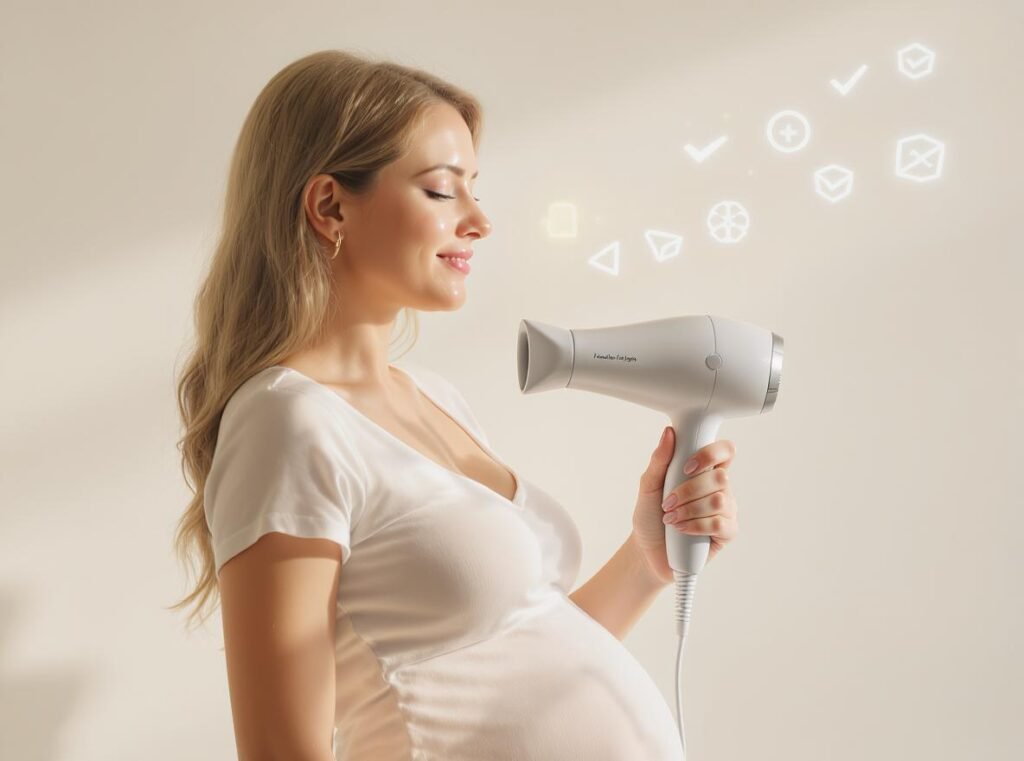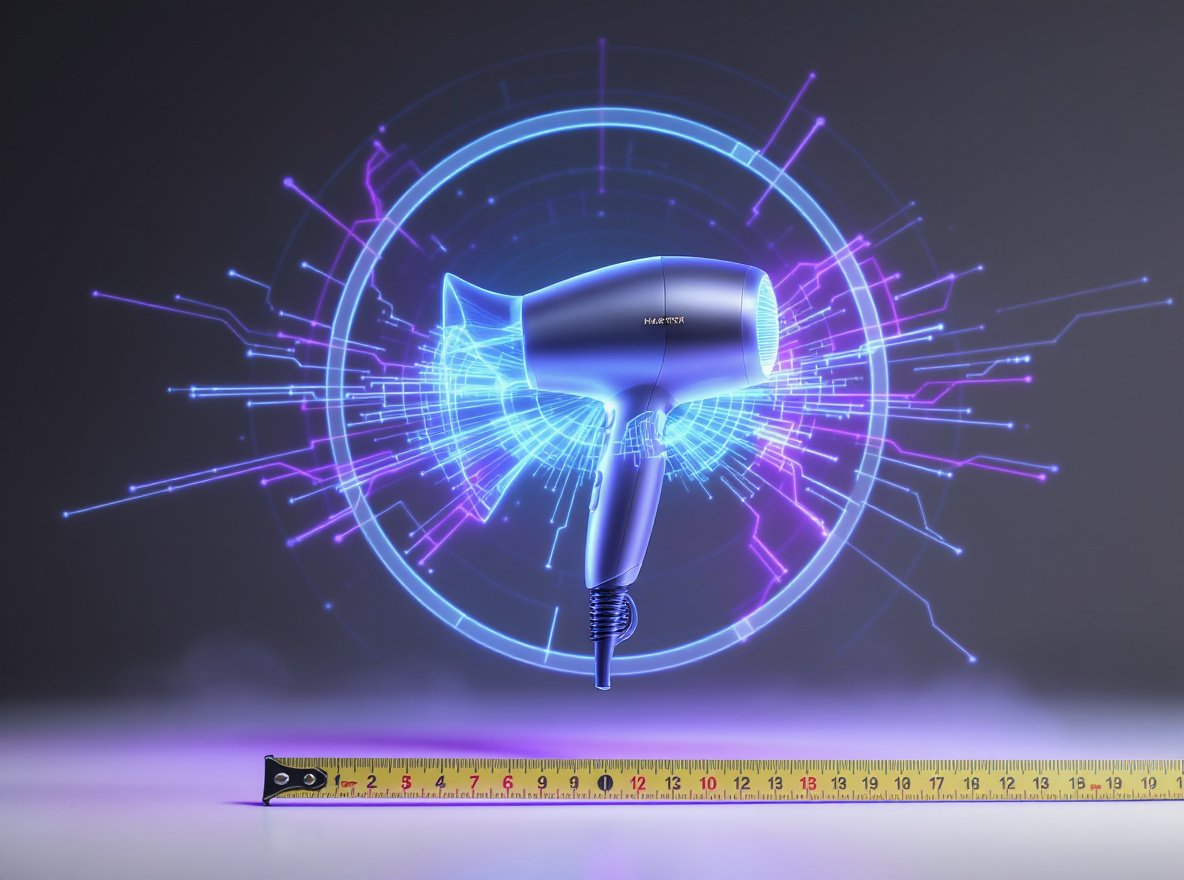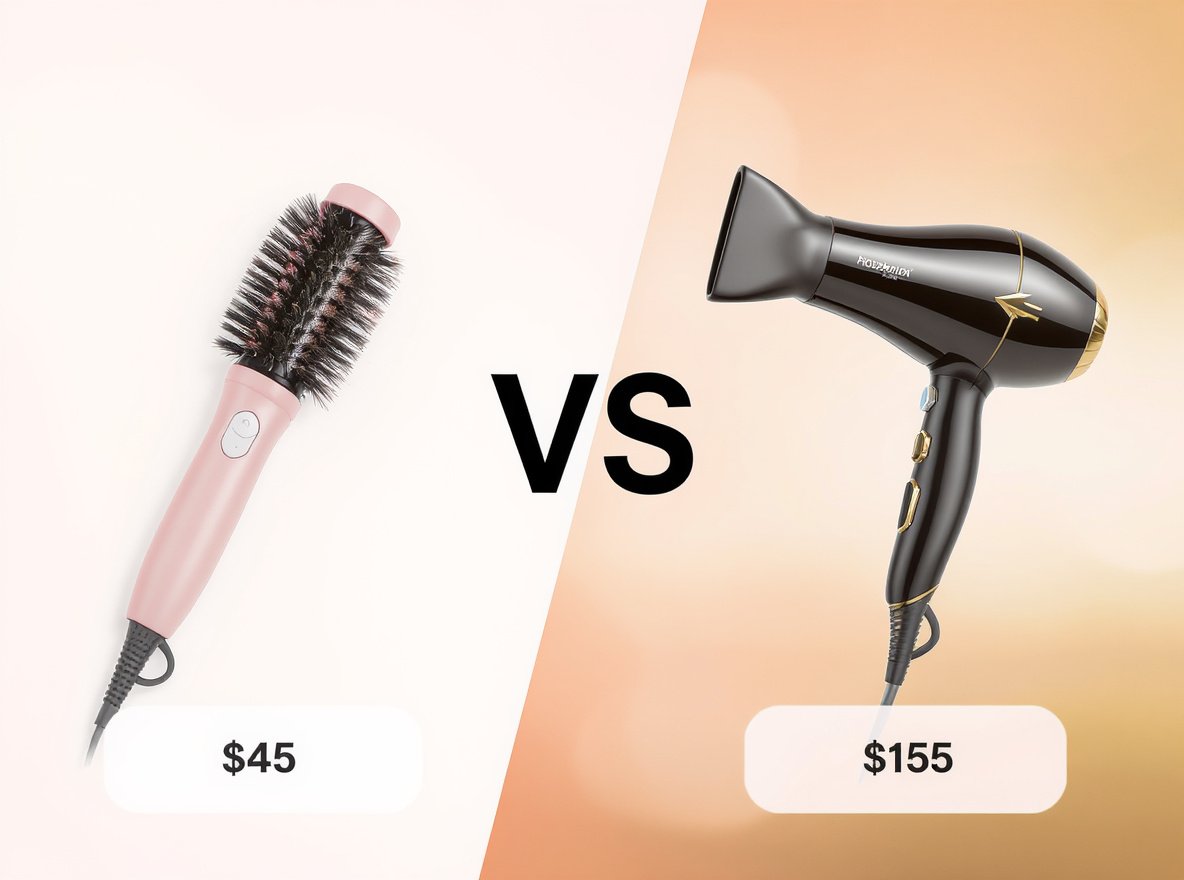Pregnancy brings countless questions about daily activities and product safety. You want to maintain your normal routine while protecting your growing baby, but conflicting advice about hair dryer use during pregnancy can leave you confused and worried.
Yes, hair dryers are safe to use during pregnancy when used properly. Most medical professionals and pregnancy resources agree that using a hair dryer during pregnancy is generally considered safe when used in a typical manner for short periods to dry hair.
Let’s explore the science behind hair dryer safety and address your specific concerns about using these essential styling tools during pregnancy.
Table of Contents
ToggleIs It Safe to Use a Hair Dryer While Pregnant?
Understanding the medical consensus helps put your mind at ease about daily hair care routines during pregnancy.
Hair dryers are completely safe for pregnant women when used normally. Medical professionals consistently state that using a hair dryer to dry your hair poses no risk to fetal development, and there is no direct evidence that typical hair dryer use harms your baby.

Medical Professional Consensus
Most doctors and pregnancy experts unanimously agree that using a hair dryer to dry your hair is safe and poses no risk to the fetus. This professional consensus is based on extensive research and decades of safe use by pregnant women worldwide.
The key factor is “typical use” – meaning short periods to dry hair rather than prolonged exposure or unusual applications. Normal hair drying sessions, which typically last 5-15 minutes, fall well within established safety parameters.
Healthcare providers routinely address patient concerns about electromagnetic exposure during pregnancy, consistently emphasizing that the evidence for harm from typical hair dryer use is extremely weak.
• Evidence-based medicine: No direct evidence links normal hair dryer use to pregnancy complications
• Professional recommendations: Obstetricians and dermatologists support continued use during pregnancy
• Safety monitoring: Ongoing surveillance has not identified hair dryers as pregnancy risks
| Medical Authority | Position | Risk Assessment |
|---|---|---|
| Obstetricians | Safe for normal use | No identified risks |
| Pregnancy experts | Generally considered safe | Minimal theoretical concerns |
| Healthcare providers | Routinely recommended | Benefits outweigh risks |
What Are the Main Concerns About Hair Dryers During Pregnancy?
While hair dryers are safe, understanding specific concerns helps address anxieties and promote informed decision-making.
The primary concerns about hair dryer use during pregnancy include electromagnetic field exposure, heat-related discomfort, and potential particulate exposure from older devices. However, research shows these concerns are largely theoretical with modern hair dryers used properly.

Electromagnetic Fields (EMF) Exposure
Hair dryers emit low-frequency electromagnetic fields, which has raised questions among some pregnant women. However, the scientific evidence provides reassuring clarity about actual risks.
Some sources suggest that high exposure to EMFs during pregnancy may be associated with increased risks, such as childhood asthma or, in rare cases, birth defects. However, most large studies have not found consistent, strong evidence of harm from the levels typically encountered with normal hair dryer use.
One study did find a possible link between high EMF exposure and increased childhood asthma risk, but this was based on overall EMF exposure from many appliances, not just hair dryers, and the findings have not been universally confirmed.
• Exposure levels: Hair dryer EMF levels are well below harmful thresholds
• Duration matters: Brief daily use provides minimal cumulative exposure
• Study limitations: Research focuses on high-level occupational exposure, not household use
Heat Exposure Considerations
Prolonged exposure to high heat, such as sitting under a salon dryer for extended periods, may cause discomfort, dizziness, or fainting, especially in poorly ventilated areas.
During pregnancy, your body’s temperature regulation changes, making you more sensitive to heat exposure. This increased sensitivity is a normal physiological adaptation but requires awareness during styling routines.
The main risk is overheating or feeling faint, which can be easily avoided with good ventilation and regular breaks during use.
Particulate Exposure Myths
Some sources claim that older or poorly maintained hair dryers may release particles such as asbestos fibers in the hot air, which could be harmful if inhaled. However, modern hair dryers are generally safe and do not contain asbestos.
This concern primarily applies to very old hair dryers manufactured before modern safety standards were implemented. Contemporary hair dryers undergo rigorous safety testing and certification processes.
| Concern Type | Risk Level | Modern Reality | Prevention |
|---|---|---|---|
| EMF exposure | Very low | Well-regulated levels | Normal use patterns |
| Heat sensitivity | Low | Manageable with breaks | Good ventilation |
| Particulate release | Negligible | Modern safety standards | Quality devices |
Can Hair Dryer Use Affect My Baby’s Development?
Scientific research provides clear guidance about fetal development and hair dryer exposure during pregnancy.
There is no strong scientific evidence that typical hair dryer use causes harm to fetal development. Most experts consider the risk from brief, normal hair dryer use to be very low, with no direct evidence of negative impacts on babies.

Research on Pregnancy Outcomes
Extensive studies examining pregnancy outcomes have consistently failed to identify hair dryer use as a risk factor for developmental issues or complications. Large-scale epidemiological studies would have detected patterns if significant risks existed.
The theoretical concerns about EMF exposure are mostly based on studies involving much higher exposure levels than those encountered during normal hair dryer use. These studies typically examine occupational exposure scenarios where workers face prolonged, high-level EMF exposure throughout their workday.
Research priorities in this area focus on understanding potential mechanisms rather than documenting actual harm, indicating that established risks remain unidentified despite decades of investigation.
• Long-term studies: No correlation found between household EMF and pregnancy complications
• Safety margins: Current exposure limits include substantial protective buffers
• Ongoing monitoring: Continuous research surveillance maintains safety confidence
Fetal Development Safety
The developing fetus is naturally protected by multiple biological barriers that shield against low-level environmental exposures like those from hair dryers. Your body’s protective mechanisms work effectively to maintain a safe environment for your baby.
Professional medical organizations have not issued specific warnings about hair dryer use during pregnancy, indicating that the established safety profile meets rigorous medical standards for protecting maternal and fetal health.
The absence of documented cases linking normal hair dryer use to birth defects or developmental delays across millions of pregnancies worldwide provides strong real-world evidence of safety.
| Research Focus | Findings | Pregnancy Relevance | Hair Dryer Impact |
|---|---|---|---|
| EMF exposure studies | No consistent harm patterns | Direct applicability | No identified risks |
| Birth defect registries | No hair dryer correlations | Comprehensive tracking | Safety confirmed |
| Developmental outcomes | Normal ranges maintained | Long-term follow-up | No negative effects |
Are There Specific Hair Dryer Features That Are Safer During Pregnancy?
Modern hair dryer technology offers enhanced safety features that provide additional comfort and peace of mind for pregnant users.
Low EMF hair dryers, automatic shut-off features, and cool air settings make hair drying safer and more comfortable during pregnancy. Modern models like ionic dryers with safety certifications offer the best combination of effectiveness and peace of mind.
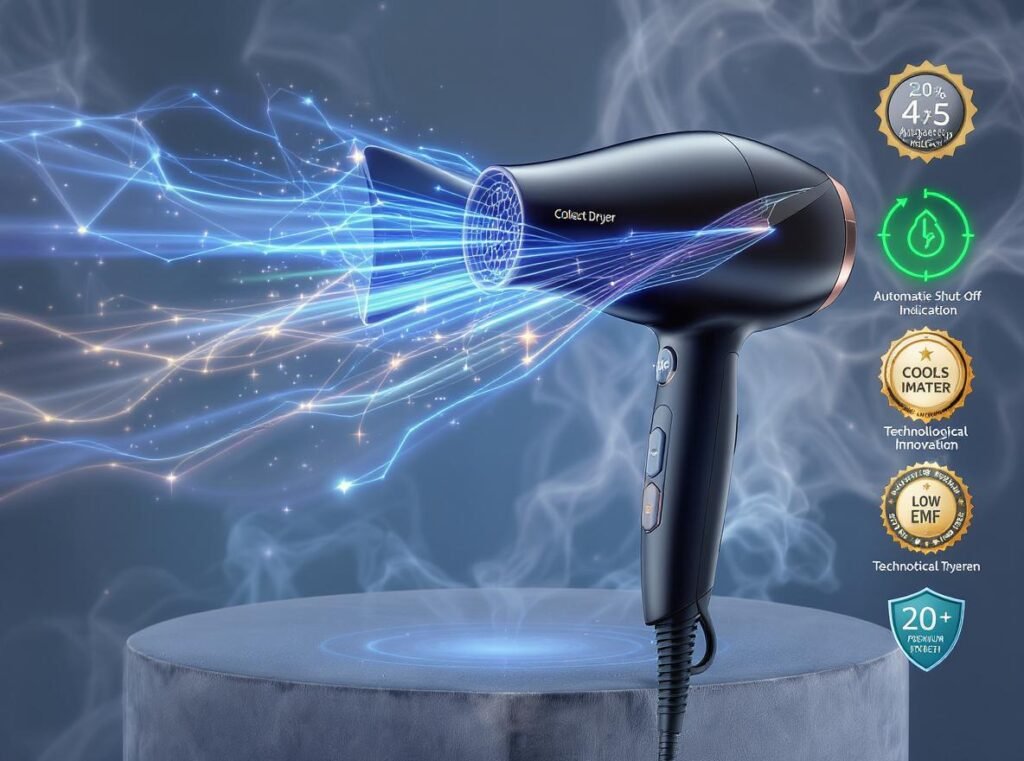
Advanced Safety Technologies
If you are concerned about EMF or heat exposure, consider investing in hair dryers with specific safety features designed for enhanced user protection.
Low EMF Hair Dryers: Some modern models are specifically designed to emit lower electromagnetic fields and include safety features like automatic shut-off to prevent overheating. These devices provide the same styling results with reduced theoretical exposure.
Ionic Technology: Modern ionic hair dryers break down water molecules more efficiently, reducing drying time and overall heat exposure. This technology provides professional results while minimizing the duration of EMF and heat exposure.
Temperature Control Features: Variable heat and speed settings allow you to customize the drying experience based on your comfort level and changing pregnancy needs.
• Automatic shut-off: Prevents overheating and provides safety backup
• Cool shot buttons: Allow for finishing touches without heat exposure
• Lightweight design: Reduces arm fatigue during pregnancy
• Safety certifications: Ensure compliance with current safety standards
Recommended Safety Features
| Feature | Safety Benefit for Pregnancy | Comfort Enhancement |
|---|---|---|
| Low EMF technology | Reduces electromagnetic field exposure | Peace of mind |
| Automatic shut-off | Prevents overheating | Safety backup |
| Cool/warm air settings | Minimizes heat exposure | Temperature control |
| Lightweight/ergonomic design | Reduces fatigue | Comfortable handling |
| Ionic technology | Faster drying, less exposure | Efficient styling |
The Conason P1C high-speed hair dryer incorporates many of these advanced safety features, including negative ionic technology, precise temperature control, and lightweight ergonomic design specifically engineered for user comfort and safety.
Professional-grade features in consumer models offer salon-quality results with enhanced safety protocols, making them ideal choices for pregnant women who want the best possible combination of performance and protection.
How Can I Use Hair Dryers Safely Throughout My Pregnancy?
Following evidence-based guidelines ensures safe, comfortable hair drying throughout all stages of pregnancy.
Safe hair dryer use during pregnancy involves maintaining good ventilation, avoiding prolonged use, taking breaks when needed, and selecting modern, high-quality devices with safety certifications. These practices maximize comfort while addressing any theoretical concerns.
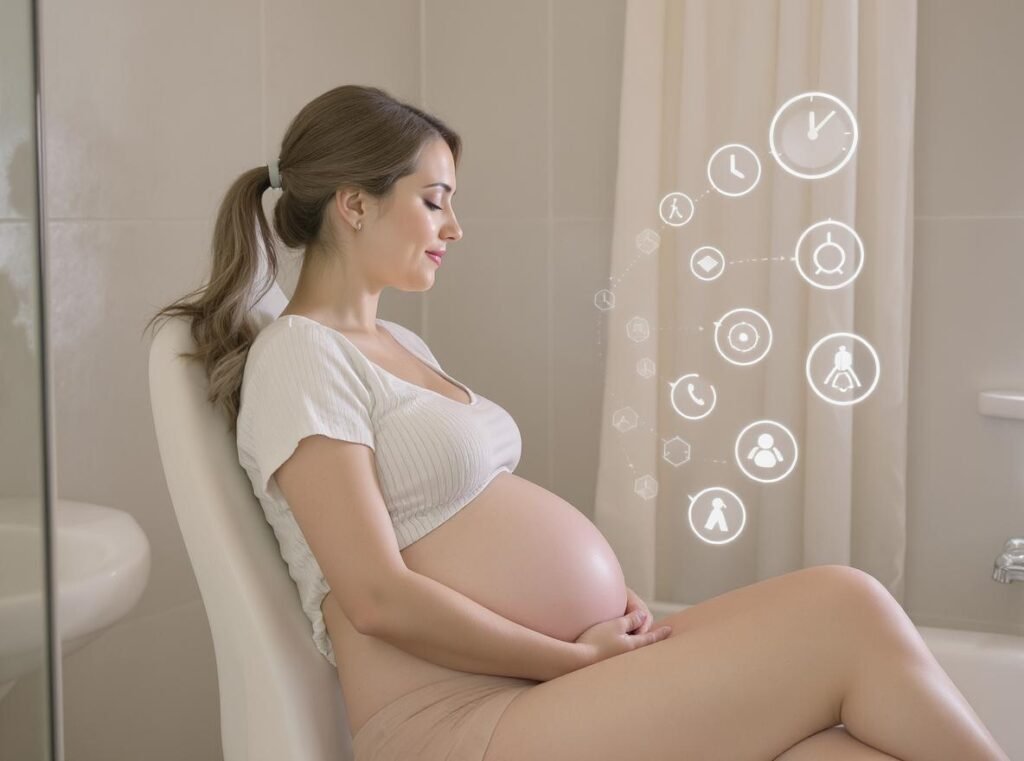
Essential Safety Practices
Use the hair dryer in a well-ventilated area to avoid overheating and dizziness. Good airflow helps regulate temperature and prevents the buildup of warm, humid air that can cause discomfort.
Avoid prolonged use or holding the dryer close to your scalp for extended periods. Maintain at least 6 inches distance from your scalp and keep the dryer moving to prevent concentrated heat exposure.
Take breaks if you feel hot, dizzy, or uncomfortable during styling sessions. Pregnancy can affect your heat tolerance, so listen to your body’s signals and adjust accordingly.
• Ventilation priority: Ensure adequate airflow in styling areas
• Distance management: Maintain proper spacing from scalp and hair
• Session duration: Limit continuous use to comfortable periods
• Body awareness: Monitor for overheating symptoms
Trimester-Specific Considerations
First Trimester: Focus on gentle settings as morning sickness may increase heat sensitivity. Many women find that lower heat settings feel more comfortable during this period of hormonal adjustment.
Second Trimester: This typically represents the most comfortable period for regular hair care routines. Take advantage of increased energy levels while maintaining established safety practices.
Third Trimester: Accommodate your changing body with lightweight hair dryers and consider seated styling positions. Physical limitations may require modifications to your routine for comfort and safety.
Select a modern, high-quality hair dryer with safety certifications and features rather than older models that may lack current safety standards. Avoid using very old or damaged hair dryers that might emit particles or malfunction.
| Trimester | Key Focus | Recommended Approach | Special Considerations |
|---|---|---|---|
| First | Heat sensitivity | Gentle, cool settings | Monitor comfort levels |
| Second | Routine maintenance | Normal safety practices | Optimal styling period |
| Third | Physical comfort | Lightweight models, seated position | Accommodate body changes |
What Do Medical Professionals Say About Hair Dryer Safety?
Healthcare experts provide consistent, evidence-based guidance on hair dryer use during pregnancy based on scientific research and clinical experience.
Medical professionals universally agree that hair dryer use poses no risk to pregnant women or developing babies. Concerns about EMF exposure are mostly theoretical, and the evidence for harm from typical use is considered weak by medical standards.

Clinical Recommendations
Most doctors and pregnancy experts say that using a hair dryer to dry your hair is safe and poses no risk to the fetus. This professional consensus reflects decades of clinical observation and research data analysis.
Healthcare providers emphasize that the main risk is overheating or feeling faint, which can be avoided with good ventilation and breaks. These are manageable comfort issues rather than safety concerns that could affect pregnancy outcomes.
Medical professionals consistently note that concerns about EMF exposure are mostly theoretical, with weak evidence for harm from typical household appliance use including hair dryers.
• Clinical experience: No documented cases of harm from normal hair dryer use
• Risk assessment: Benefits of hygiene and self-care outweigh theoretical concerns
• Evidence standards: Current research does not support usage restrictions
Professional Medical Organizations
Major healthcare organizations including obstetric and dermatologic societies have not issued warnings about hair dryer use during pregnancy. This absence of warnings indicates that the safety profile meets rigorous medical standards.
Healthcare providers routinely recommend maintaining normal hygiene and self-care routines during pregnancy, including regular hair washing and drying. The psychological benefits of feeling well-groomed and maintaining personal routines contribute positively to maternal wellbeing.
Professional medical training includes education about actual versus theoretical risks during pregnancy, helping healthcare providers give patients accurate, evidence-based guidance about daily activities like hair dryer use.
| Medical Specialty | Position | Risk Assessment | Recommendations |
|---|---|---|---|
| Obstetrics | Safe for normal use | No identified pregnancy risks | Continue routine use |
| Dermatology | Supports hair care maintenance | Benefits outweigh concerns | Proper hair hygiene important |
| Family Medicine | Part of normal self-care | Theoretical concerns only | Evidence-based approach |
Are There Alternatives to Traditional Hair Dryers During Pregnancy?
While traditional hair dryers remain safe and effective, exploring alternatives can provide options for different comfort preferences during pregnancy.
Alternatives like air-drying, towel drying, and low-EMF ionic dryers offer variety for different comfort levels, though traditional hair dryers remain the most efficient and safe option for most pregnant women.
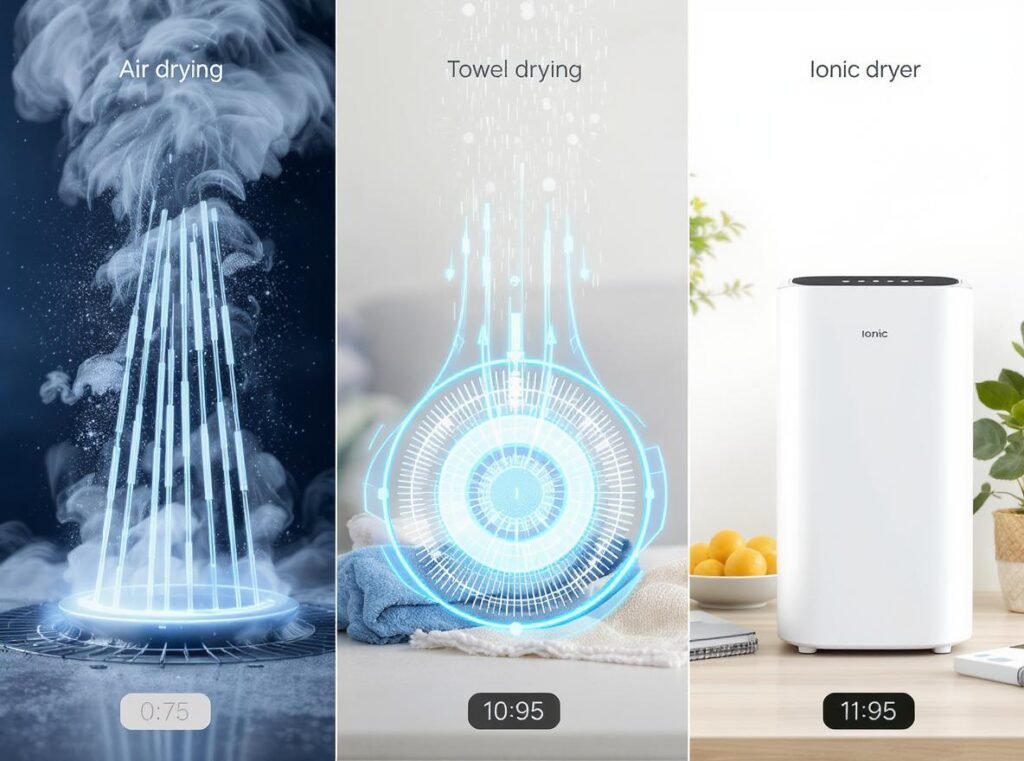
Natural Drying Methods
Air Drying: Let your hair dry naturally to avoid any heat or EMF exposure entirely. This method requires significantly more time but eliminates any theoretical concerns about electromagnetic fields or heat exposure.
Towel Drying: Use a soft, microfiber towel to gently remove excess moisture before air-drying or using a hair dryer for shorter periods. This hybrid approach reduces overall drying time while minimizing appliance use.
Natural methods work best for women with shorter hair or those with flexible schedules who can accommodate longer drying times. Consider your lifestyle needs when evaluating these alternatives.
• Time investment: Natural methods require 2-4 hours for complete drying
• Hair type considerations: Works better for fine or short hair
• Schedule flexibility: Best for those with relaxed morning routines
• Seasonal factors: More practical in warm, dry climates
Advanced Technology Options
Low-EMF or Ionic Dryers: Choose models specifically designed for safety and reduced EMF output while maintaining professional styling results. These devices offer the best of both worlds for concerned users.
Modern ionic dryers like the Conason P1C utilize negative ionic technology to break down water molecules more efficiently, reducing drying time and heat exposure while providing superior results compared to traditional models.
Professional-grade features in consumer models offer salon-quality results with enhanced safety protocols, making them ideal for pregnant women who want optimal performance with maximum peace of mind.
| Alternative Method | Time Required | Safety Profile | Effectiveness | Pregnancy Suitability |
|---|---|---|---|---|
| Air-drying | 2-4 hours | Maximum safety | Variable results | Good for flexible schedules |
| Towel pre-drying | 30-60 minutes | Very safe | Good preparation | Excellent hybrid approach |
| Low-EMF dryers | 5-15 minutes | Enhanced safety features | Professional results | Optimal for concerned users |
| Ionic technology | 3-10 minutes | Advanced safety | Superior performance | Best overall choice |
Salon Considerations During Pregnancy
Professional salon visits raise similar questions about hair dryer safety, but salons use more powerful equipment operated by trained professionals who understand proper techniques and safety protocols.
Communicate your pregnancy to your stylist so they can adjust their techniques accordingly, including using lower heat settings, ensuring comfortable positioning, and providing adequate ventilation throughout your appointment.
Many salons now offer pregnancy-specific services with enhanced comfort measures, recognizing the unique needs of expectant mothers and adapting their services accordingly.
Summary
Hair dryers are completely safe for use during pregnancy, with medical professionals and extensive research consistently showing no risks to mothers or babies from normal use. The main concerns about electromagnetic fields and heat exposure are largely theoretical, with no strong scientific evidence supporting restrictions on typical hair dryer use.
Modern hair dryers offer enhanced safety features including low EMF technology, automatic shut-off capabilities, and ionic drying that reduce exposure time while improving results. Following simple guidelines like maintaining good ventilation, using appropriate heat settings, and taking breaks ensures optimal comfort throughout your pregnancy journey.
For the safest and most comfortable hair drying experience during pregnancy, explore our collection of advanced hair dryers featuring the latest safety technologies at Conason’s product page. Our P1C high-speed hair dryer combines negative ionic technology, precise temperature control, and ergonomic design specifically engineered for user safety and comfort. Contact our team today to learn about wholesale opportunities for retailers seeking to offer pregnant customers the most advanced, safety-focused hair drying solutions available.

